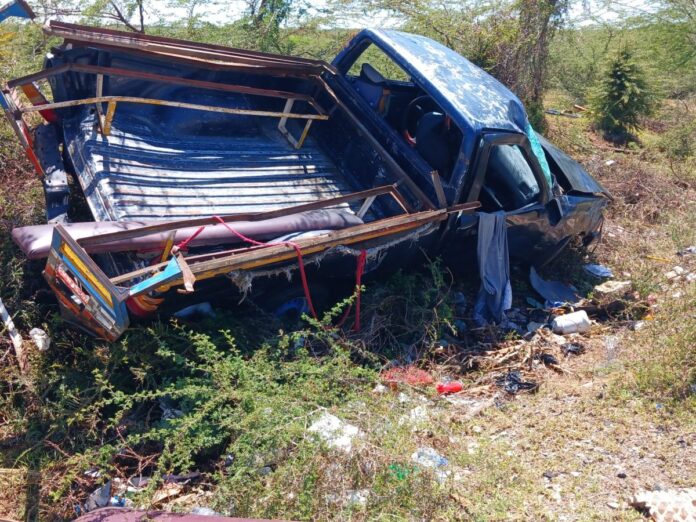Overview:
A devastating accident on National Road 6 in Ouanaminthe killed three young men on Aug. 21, raising the death toll on this critical trade route to 14 in just about a year. Grieving families and other residents call for urgent safety fixes to be made.
FORT-LIBERTE — Court of the Peace Judge Renau Pierre confirmed Thursday that three young men working as motorcycle-taxi drivers and tire repairmen—Guempson Saintilnord, Jimmy Otalus and Mexène Fleurilus, aged 17 to 26—were killed while traveling from the capital city of the Northeast Department to the border town of Ouanaminthe.
A hole on the National Road 6, one of Haiti’s most dangerous roads, triggered the crash, leading to immediate fatalities, the judge reported.
Residents, witnessing the fatal accident, described a devastating scene: a gaping hole in the pavement, a sudden swerve and the three young men were trapped beneath a truck, their motorcycle engulfed in flames.
This incident brings the death toll on this vital highway at least to 14 in 2025, amid 402 reported accidents since 2024.
Families mourn as accidents on National Road 6 highlight government negligence, poor infrastructure, unsafe and reckless driving
National Road 6 isn’t just a road—it’s a lifeline for trade and transit between the North, Artibonite, Northeast and the Dominican Republic. Yet its narrow lanes, deteriorating surface and scant enforcement make it lethal. Advocacy groups and local families warn that without dramatic safety investments and driver training, more tragedies like this one are inevitable.
Residents are distraught. Jean Herold Dumesle Pierre described Mount Casse—a stretch of National Road 6—as “a corridor of death,” urging authorities in Ouanaminthe and Fort-Liberté to unite in improving safety.
Isala Marcelin cited the road’s narrowness, calling it unfit for current traffic volumes. At the same time, Miraldo Jean-Baptiste laid blame on reckless drivers.
“It’s the drivers who are to blame,” Jean-Baptiste told The Haitian Times.
“They respect no traffic principles. Even if you’re in your lane, they hit you.”
Patrick Fulton Chérizier agreed. He said, “The lack of caution among drivers combined with the government’s negligence in road safety is the cause of these types of accidents.”
This crash is part of a broader pattern. Earlier this month, a collision near the Dajabón market injured many and killed at least one, while another on Aug. 12 caused severe losses for vendors. These incidents amplify the case for urgent upgrades to infrastructure and driver education.
The challenge of road safety
Haiti’s road death rate—nearly 20 per 100,000 people—is four times higher than Western European averages, according to a 2021 Inter-American Development Bank report. Vulnerable road users—especially motorcyclists and pedestrians—are disproportionately affected. National Road 6’s status as a high-risk corridor reflects systemic failures: poor signage, lack of formal driver training, crumbling surfaces and the absence of traffic policing.
In response, residents have repeatedly called for urgent measures — from repairing and re-engineering hazardous stretches, to strengthening traffic patrols, enforcing vehicle standards, launching public-awareness campaigns and establishing reliable emergency medical response along major routes.
As communities mourn yet another preventable loss, voices like those of Jean-Baptiste, Marcelin and Chérizier grow louder, insisting that Haiti can no longer afford to ignore the warning signs. For them, the message is clear: the time to act is now.
